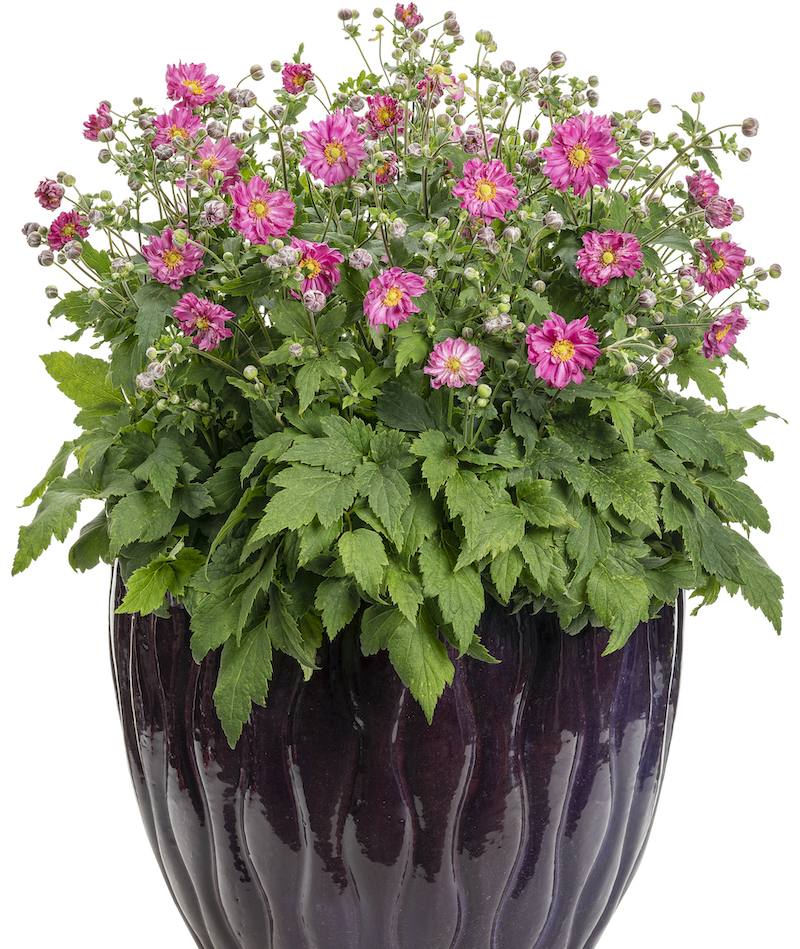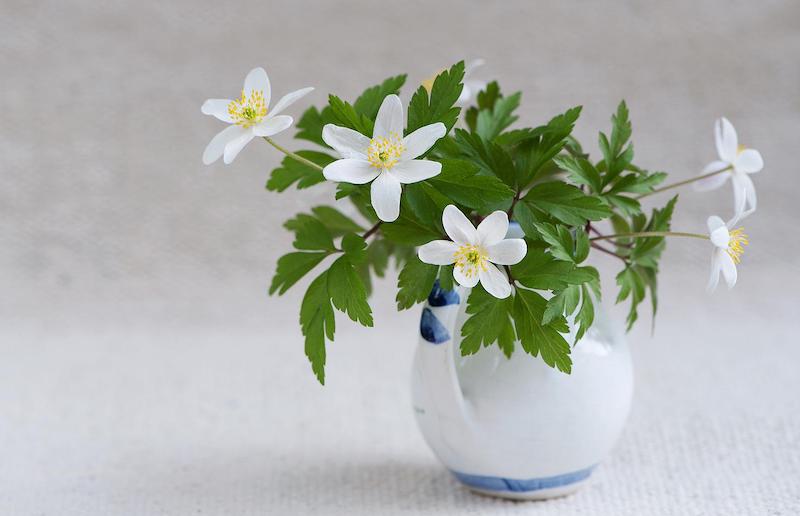Windflowers are a diverse group of perennials with delicate poppy-like flowers. In general, varieties either bloom in the spring or the fall. Windflowers can be an attractive addition to window boxes or containers outside your home. There are some varieties with specific needs, but in general, windflowers are low maintenance outside of their demands for moist but not water-logged soil.

Planting Windflowers in Pots
You can grow either spring- or fall-flowering windflowers in containers, but planting time is determined by variety. For spring-flowering varieties, plant in fall and for fall-flowering varieties, plant in spring.
When selecting a pot, be sure to look at the spacing requirements and predicted size for the variety selected. Windflowers can range from 6 inches to 4 feet tall, so the size of pot required may vary as well. Most importantly, make sure that the container has drain holes so excess water does not drown the windflower roots.
It is generally recommended to use large 12 to 14-inch containers for windflowers. Corm-type windflowers should be planted 2 inches deep with a 4-inch spacing. Rhizomatous varieties (those that send out underground shoots to make more plants) should be planted one per pot. If plants become root bound or too crowded (which may happen due to windflowers ability to produce additional plants from corms/rhizomes), you will need to thin and transplant during the spring for fall-flowering varieties or the fall for spring-flowering varieties.

Best Soil For Windflowers in Pots
Windflowers prefer moist soil that is well draining. To achieve this, mix a little compost, leaf mold, or other organic matter with potting soil. A little gravel may also aid in drainage, which is important because water-logged soil will cause the roots to rot.
Caring For Windflowers in Planters
Overall, little care is required by windflowers after planting. Finding a sunny location for the pot and watering approximately once a week will allow the windflowers to thrive.
Watering Windflowers in Pots
Windflowers prefer even moisture, but will easily develop root rot if waterlogged. Therefore, check the top inch of the soil before watering to ensure it is dry to the touch. Check pots every 4-6 days until you establish a schedule (in drier/hotter climates, more frequent watering may be required). If the pot is drying too quickly, a thin layer of mulch may help retain moisture.
Fertilizing Windflowers in Pots
Windflowers typically do not require fertilizer. The best way to fertilize, if you choose to, is to add 1 teaspoon of bone meal or equivalent bulb fertilizer per plant in the container and mix thoroughly.
Winter Care For Windflowers in Pots
Windflowers require a winter chill period where they experience dormancy. For that reason, potted windflowers do not typically adapt well to moving indoors for the winter. If night temperatures consistently reach below 32 degrees Fahrenheit, it is best to bring potted windflowers into an unheated greenhouse or other area that is sheltered while still providing the necessary winter chill period. Otherwise, the pots may remain outdoors throughout the winter.
Growing Windflowers Indoors
Potted windflowers may be grown indoors year-round, but they will require pruning after the plant has gone to seed if you do not allow them to have a winter chill period (which is strongly recommended). You may harvest and save the seeds, and then cut the plant back severely (leaving approximately an inch of foliage). The plant will continue to grow and flower again the following year.

 |
Author Chris Link - Published 07-21-2022 |
